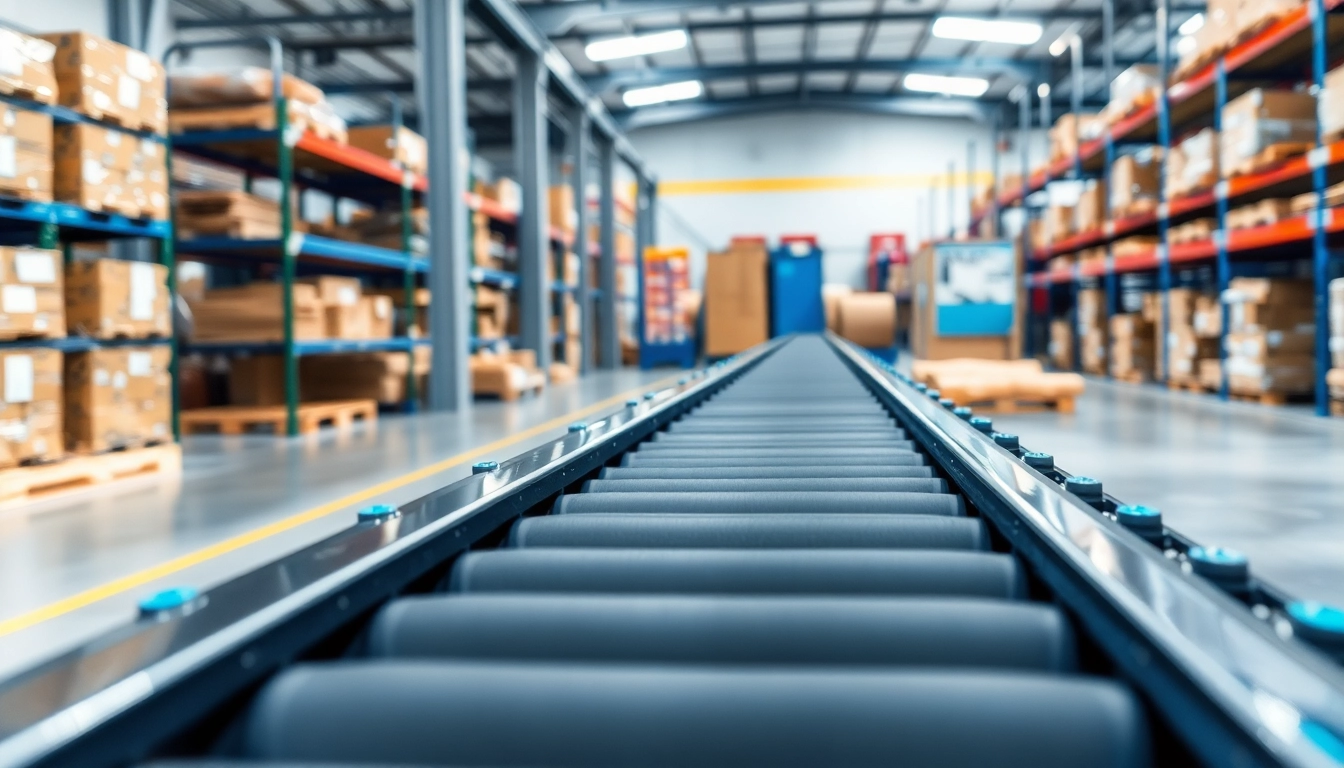
Understanding the Air Conveyor System
The manufacturing and logistics industries are continually evolving, and technologies that enhance efficiency and productivity remain a priority. One such technology is the air conveyor system, a unique and effective solution for transporting materials without relying on traditional mechanical methods. This article delves into the intricacies of air conveyors, exploring their workings, benefits, types, key features, selecting the right system, and future trends. In the rapidly changing landscape of material transport, understanding an air conveyor can significantly streamline operations.
What is an Air Conveyor?
An air conveyor, often referred to as a pneumatic conveyor, utilizes a stream of air to transport materials from one point to another. Unlike traditional conveyors, which typically rely on belts or rollers, air conveyors work based on the principles of fluid dynamics and are designed to convey bulk materials efficiently over varying distances. These systems are particularly beneficial in industries that require the transport of light materials, such as empty bottles, packaging, and light components.
How Air Conveyors Work
At their core, air conveyors function by creating a controlled airflow that transports materials through a designated pathway. The system comprises several elements, including:
- Air Source: Usually a blower or compressed air source that generates the airflow necessary for conveying.
- Conveying Channel: An enclosed or semi-enclosed pathway where materials are carried through the airstream.
- Material Feed System: This mechanism introduces materials into the airstream, ensuring consistent and uninterrupted flow.
When materials enter the airflow, they become suspended and are transported along the channel. Depending on the system’s design, air conveyors can be configured to operate as either vacuum or pressure systems, allowing for flexibility based on the specific needs of the application.
Benefits of Using Air Conveyors
Implementing air conveyor systems in a facility can lead to several advantages:
- Increased Efficiency: Air conveyors can transport materials quickly and over long distances, reducing downtime and increasing productivity.
- Reduced Physical Contact: Since air conveyors rely on airflow, they minimize the risk of material damage compared to traditional mechanical systems.
- Energy Efficiency: Many air conveyors are designed to consume less energy compared to electric-driven systems, especially when moving lightweight items.
- Versatility: Air conveyors can be used to move a variety of materials, including granular, powdered, and lightweight items, making them applicable across diverse industries.
Types of Air Conveyors
Overview of Different Air Conveyor Types
Air conveyor systems come in various types, each suited for different applications and material handling needs. Understanding these distinctions is crucial for selecting the appropriate system:
- Pneumatic Conveyors: These systems transport materials through enclosed pipes using high-velocity air. They are ideal for handling powdered or granular materials.
- Vacuum Conveyors: This type uses negative pressure to draw materials into the air stream. It is particularly effective for transporting lightweight items and is commonly used in food processing.
- Air-Supported Conveyors: Utilizing a cushion of air to support the movement of materials, these conveyors reduce friction and can handle larger packages.
Applications of Air Conveyors in Industries
Due to their versatility, air conveyors find applications in various industries:
- Food and Beverage: Commonly used to transport empty bottles and containers, ensuring an automated and hygienic process.
- Pharmaceutical: Essential for moving sensitive materials without physical contact, which ensures product integrity.
- Plastic Manufacturing: Useful for transporting light plastic parts and scraps in production lines.
Comparative Analysis of Air Conveyor Types
To better understand the various types of air conveyors, it’s important to analyze their strengths and weaknesses. For example, pneumatic conveyors excel in transporting bulk powders but may struggle with larger items. On the other hand, air-supported conveyors can handle larger packages while providing energy efficiency through reduced friction. Assessing your specific needs will help determine the best system for your operation.
Key Features to Consider in Air Conveyors
Capacity and Performance Metrics
When choosing an air conveyor, capacity and performance metrics are critical. It’s essential to consider:
- Throughput: The volume of material that can be conveyed per hour, which directly impacts productivity.
- Distance: The maximum distance the air conveyor can effectively transport materials without sacrificing efficiency.
- Material Size and Weight: Understanding the types of materials to be conveyed is essential for determining the system’s capacity and operational parameters.
Material Compatibility and Safety Standards
The compatibility of materials with the conveyor system is paramount. Operators must ensure that the materials being transported do not degrade or pose safety risks. Additionally, adhering to safety standards, especially in industries like food and pharmaceuticals, is essential for maintaining regulatory compliance.
Maintenance and Operational Efficiency
Regular maintenance is crucial for the longevity and efficiency of air conveyor systems. Key maintenance tasks include:
- Cleaning: Keeping the system free from dust and debris to maintain optimal airflow and performance.
- Inspection: Regularly checking components such as blowers and piping for wear and potential blockages.
- Lubrication: Ensuring moving parts are properly lubricated (where applicable) to minimize friction and wear.
Choosing the Right Air Conveyor for Your Needs
Assessing Project Requirements
Before investing in an air conveyor, it is vital to assess your specific project requirements. Consider the following:
- Type of materials: Are they light, bulky, or fragile?
- Distance and height: How far and how high do the materials need to be transported?
- Operating environment: Is it cleanroom, manufacturing floor, or outdoor?
Cost Considerations and Budgeting Tips
While cost is always a consideration, it’s essential to weigh the initial investment against potential long-term savings. A cost-effective air conveyor system can lead to increased productivity, lower labor costs, and reduced energy consumption. Create a detailed budget that includes installation fees, maintenance costs, and potential upgrades.
Consulting with Industry Experts
Consulting with industry experts can provide valuable insights into selecting the most suitable air conveyor system. Engage with manufacturers or professionals with expertise in material handling systems to identify the best options tailored to your needs.
Future Trends in Air Conveyor Technologies
Innovations and Advancements in Design
As technology evolves, so do air conveyor systems. Innovations such as adaptive controls and IoT integration are enhancing operational efficiency and user experience. These advancements allow for real-time monitoring and adjustments, maximizing throughput and minimizing downtime.
Impact of Automation on Air Conveyors
The shift towards automation in manufacturing and logistics is driving the development of smarter air conveyor systems that can be integrated with other automated processes. This integration enhances workflow efficiency and supports the overall automation strategy of modern factories.
Environmental Sustainability Considerations
As industrial sustainability becomes increasingly important, air conveyor systems are adapting to meet these challenges. Manufacturers are focusing on developing energy-efficient systems and environmentally friendly materials ensuring that operations remain sustainable.





